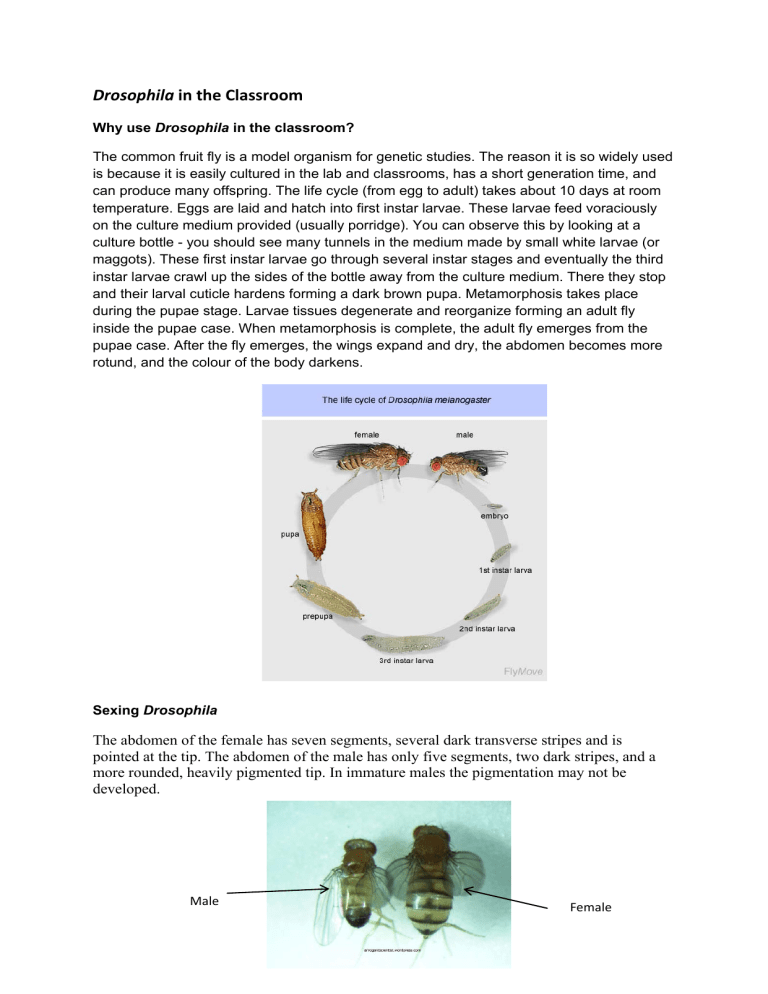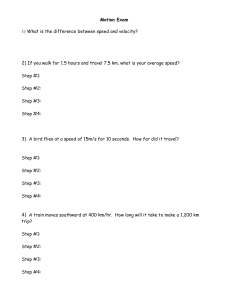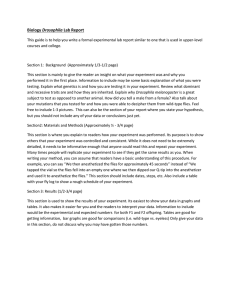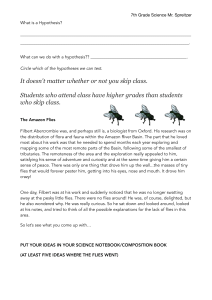
Drosophila in the Classroom Why use Drosophila in the classroom? The common fruit fly is a model organism for genetic studies. The reason it is so widely used is because it is easily cultured in the lab and classrooms, has a short generation time, and can produce many offspring. The life cycle (from egg to adult) takes about 10 days at room temperature. Eggs are laid and hatch into first instar larvae. These larvae feed voraciously on the culture medium provided (usually porridge). You can observe this by looking at a culture bottle - you should see many tunnels in the medium made by small white larvae (or maggots). These first instar larvae go through several instar stages and eventually the third instar larvae crawl up the sides of the bottle away from the culture medium. There they stop and their larval cuticle hardens forming a dark brown pupa. Metamorphosis takes place during the pupae stage. Larvae tissues degenerate and reorganize forming an adult fly inside the pupae case. When metamorphosis is complete, the adult fly emerges from the pupae case. After the fly emerges, the wings expand and dry, the abdomen becomes more rotund, and the colour of the body darkens. Sexing Drosophila The abdomen of the female has seven segments, several dark transverse stripes and is pointed at the tip. The abdomen of the male has only five segments, two dark stripes, and a more rounded, heavily pigmented tip. In immature males the pigmentation may not be developed. Male Female Setting Up Your Class In the beginning it might seem like a lot of effort to set up but once its done, you can use the flies all year for investigations, observations and science fair projects. Equipment 1. A shelf for storing the bottles of flies inside a classroom. 2. Clean transparent vials/jars/bottles for housing flies. Large test tubes, falcon tubes or a clean clear container with a suitable narrow neck for plugging with a breathable lid. You can buy bottles and stoppers specfically for culturing Drosophila from Lab Supply (0800 522 787, http://www.labsupply.co.nz/items/results?search=drosophila). 3. The lids must allow air to flow through the jars/bottle. A cotton wool plug, foam chunks cut to size, clean gauze or material to cover tied down with a rubber band. 4. Magnifying glasses and/or microscopes for observation and sorting. 5. Petri dishes for viewing and sorting while under the microscope or plain white card. 6. A variety of small paint brushes (sizes ranging from 00 to 5) for manourving the flies under the microscope. 7. Drosophila can be obatined from Biosupplies (http://www.ak.planet.gen.nz /~bio/) or Carolina Science Supplies (http://www.carolina.com/category/living+organisms/animals/drosophila+% 28fruit+fly%29.do) Fly Food In nature Drosophila adult and larvae eat yeast on rotting fruit. However, in the laboratory they ca be fed on a high carbohydrate prepeared diet- porridge! Making a batch of fly food takes about 40 minutes but once you have it made it lasts for several months in a fridge. This recipe makes 90 bottles of food. Ingredients 27 g agar 200 g cornmeal (organic, fine ground) 140 g sugar 50 g yeast 20 ml propionic acid (added to prevent bacterial growth) A dash of Nipagin (dissovle Nipagin powder in ethanol 1;9; added to prevent fungal growth) Tap water Instructions 1. 2. 3. 4. 5. 6. 7. 8. Dissovle agar in 2L tap water by boiling Dissolve cornmeal, sugar and yeast in 1L cold tap water so that it is free of lumps. Once agar is dissovled add cornmeal mix and bring to boil. Stir constantly to aviod caking/burning on bottom. Boil for 15 minutes, stirring constanty. Take off stove and cool. Add Propionic acid and Nipagen. Ensure you are working in a well ventalted area. Distrubute fly food into vial/bottles as required. Only fill each container up to 1.5 cm. Cover with paper towels and allow to cool and dry (over night) at room temperture. Vials/bottles should be plugged before storing in a fridge. Handling Flies Once the flies have been knocked you can move the flies around using a clean paint brush. Using the paint brush carefully means you will not damage the flies when sorting and manourving. Tranferring flies from one container to another involves tapping the bottle gently, the flies dislodge from the walls and fall to the bottom. Removing the lid from the bottle you want to transfer the flies to and placing the flies over this bottle, then tap and the flies will fall from one bottle to another, quickly put the lids on the bottles. 1. Gently tap the bottle several time so the flies drop to the bottom. 2. Remove the lid from the bottle and quickly place over the bottle you want to transfer to. 3. Gently tap both bottles together until all the flies have fallen into the new bottle. Quickly place a lid on to prevent escapes. 4. Remember to label the new bottle with type of fly and date they were ‘turned’, transferred. Anaesthetising Flies There are two main ways you can anaesthetise flies. Choose one that is easiest for you. Freezer Method The freezer is a safe way to slow the flies down but be careful as too long here will kill the flies. Depending on the container and the freezer, flies may die with up to 8 minutes in the freezer. 2 minutes in the freezer will give you about 2-3 minutes + with the flies knocked out. They can then be sorted into petri dishes with lids for viewing under a microscope. Carbon dioxide A tube attached to a soda stream bottle and directed into a vial of flies with make them fairly sluggish and easy to handle for a short time. It is a good idea to have a petri dish lid nearby to trap the active flies. To avoid blasting and damaging the flies, you may want to pump a few shots of CO2 into the vial through a guaze or cotton flug. (see picture). CO2 is heavy and for optimum results be sure to tap the flies to the bottom so they are sitting in the CO2 gas. Carolina's FlyNap® Anesthetic Kit, can enable students to anesthetize flies from 50 minutes to several hours after a single application refer to the website for details. (http://www.carolina.com/category/teacher+resources/classroom+activities/nap+time+for+dr osophila.do?KickerID=int_t_sgt_animals_drosophilanaptimeTR) You can also use the flynap method or ether. However, these are more dangerous. See the website http://www.drosophila.moonfruit.com/# for more information on these methods. References http://arrogantscientist.wordpress.com/2009/03/06/the-differences-between-the-sexes/ http://math.hws.edu/javamath/ryan/Genetics1.html http://www.mun.ca/biology/dinnes/B2250/dros_intro.pdf http://www.drosophila.moonfruit.com/#/handling-flies/4558098215







